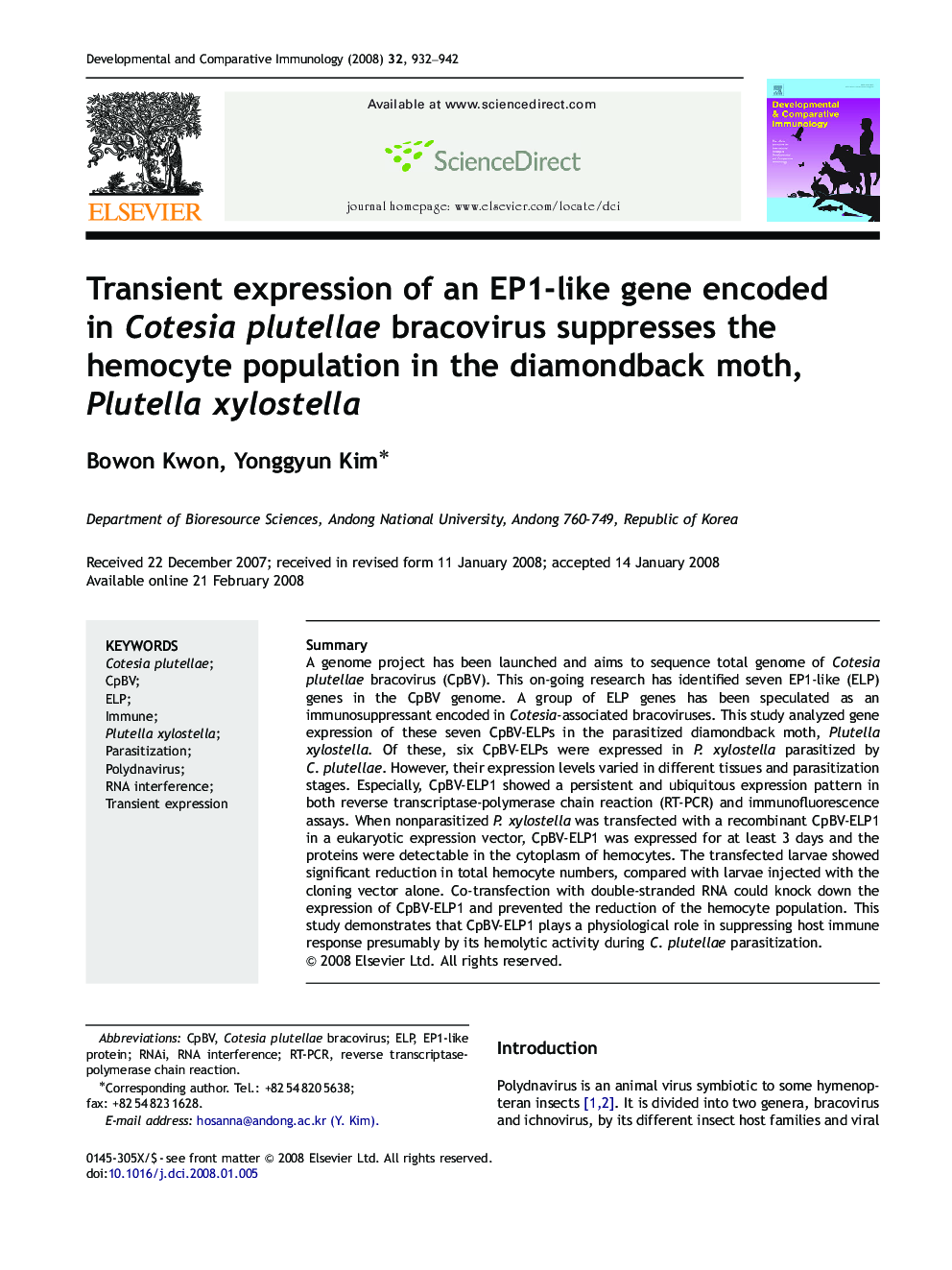| Article ID | Journal | Published Year | Pages | File Type |
|---|---|---|---|---|
| 2430037 | Developmental & Comparative Immunology | 2008 | 11 Pages |
SummaryA genome project has been launched and aims to sequence total genome of Cotesia plutellae bracovirus (CpBV). This on-going research has identified seven EP1-like (ELP) genes in the CpBV genome. A group of ELP genes has been speculated as an immunosuppressant encoded in Cotesia-associated bracoviruses. This study analyzed gene expression of these seven CpBV-ELPs in the parasitized diamondback moth, Plutella xylostella. Of these, six CpBV-ELPs were expressed in P. xylostella parasitized by C. plutellae. However, their expression levels varied in different tissues and parasitization stages. Especially, CpBV-ELP1 showed a persistent and ubiquitous expression pattern in both reverse transcriptase-polymerase chain reaction (RT-PCR) and immunofluorescence assays. When nonparasitized P. xylostella was transfected with a recombinant CpBV-ELP1 in a eukaryotic expression vector, CpBV-ELP1 was expressed for at least 3 days and the proteins were detectable in the cytoplasm of hemocytes. The transfected larvae showed significant reduction in total hemocyte numbers, compared with larvae injected with the cloning vector alone. Co-transfection with double-stranded RNA could knock down the expression of CpBV-ELP1 and prevented the reduction of the hemocyte population. This study demonstrates that CpBV-ELP1 plays a physiological role in suppressing host immune response presumably by its hemolytic activity during C. plutellae parasitization.
